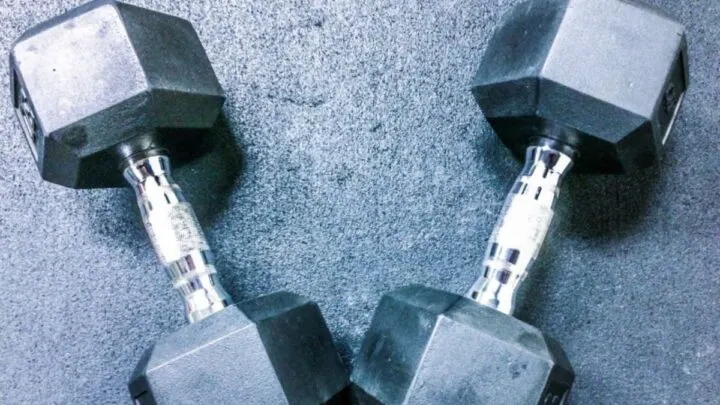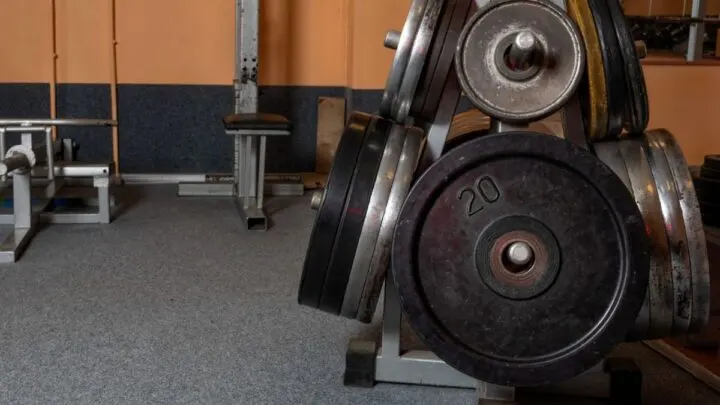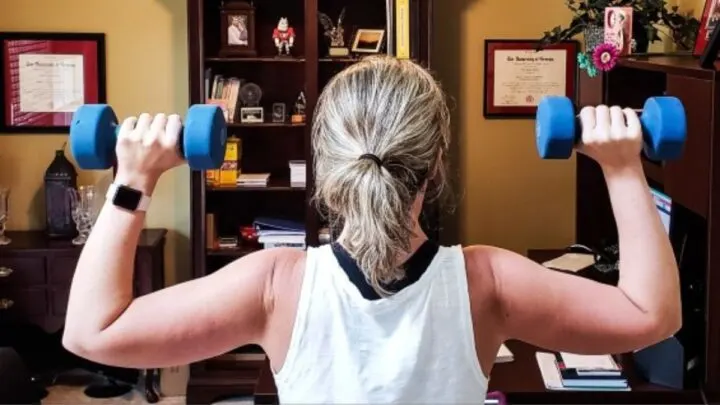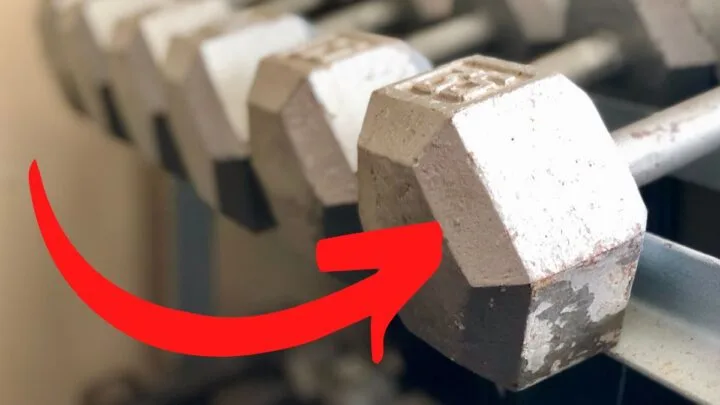Weight lifting is one of the most efficient exercise essentials. Weight training can help one’s body get toned, build muscle, and get stronger.
However, there are probably a lot of basic weight lifting options available at the gym and you might not know which one you should use if there is no trainer to guide you.
There are multiple different types of free weights that can help you on your fitness journey, including dumbbells, barbells, kettlebells, weight plates, medicine balls, and even more. Knowing how to use these can invigorate your workout routine and help you build even more muscle along the way.
If you don’t know about the different types of weights available at the gym, you might end up using it incorrectly and potentially tearing your muscles.

7 Types Of Free Weights You Should Know About
Weights are some of the most versatile options for losing weight and toning your body.
Looking at the different types of weight at the gym might make you feel overwhelmed, but it’s a great idea to know how to use them.
Here are the seven types of free weights you should know about before you incorporate it in your daily exercise routine:
1. Dumbbells
Dumbbells are one of the most commonly available weights at the gym.
They can help you with a lot of different exercises including arm exercises, shoulder presses, and lunges.
Dumbbells can also be used for targeting different muscle groups, which makes it one of the most versatile weight options at the gym.
Dumbbells can be used by almost everyone, even those who are not actively looking to build muscle mass.
Also, they range in weight from 1 lb all the way up to 30 lbs sometimes, or even higher. The incremental increase helps gradually increase muscle strength.
However, if someone is already lifting heavy weights, dumbbells are not challenging and would not be as effective as other weights.
2. Barbells
Another common type of weight available at the gym are barbells.
While dumbbells have a central metal bar used to grip the weight, the barbells have a longer central bar.
Barbells are also used to perform a diverse range of exercises including the military press, the bench press, front and back squats, and deadlifts.
Types of Barbell Bars
There are different bar types in barbells. The most common one is a straight bar where the central bar is a long straight rod.
A curl bar is also used by weightlifters and the curl on the weight rod helps in securing the hand in place when weightlifting.
A trap bar is also a barbell type which “traps” the weightlifter so their body does not move. It is mostly used by athletes because it helps improve strength-to-weight ratio as well as speed.
Safety squat or yoke bar is another type of barbell that allows squatting without putting pressure on elbows, arms, or wrists.
It does this by enabling you to rest the bar across the upper back which you are squatting.
3. Weight Plates
Weight plates are another type of weight used for weight training.
They are used to add weight to exercises like bench presses and squats.
While they are mostly used in conjunction with barbells, they can also be used for exercise like Russian twists, shoulder presses, front raises, and lateral raises.
Olympic vs Standard Sizes
Weight plates are available in standard and Olympic sizes based on the barbell this fits into.
The standard plates have a smaller central hole which fits onto the standard barbells.
Compared to this, Olympic sized weight plates fit onto Olympic barbells.

Iron vs Bumper Material
They are also made of different materials including iron and bumper material.
The bumper material is covered with a rubber coating which assures that the plate does not damage the floor if dropped, nor injure anyone if it lands on their feet.
Iron plates on the other hand are the same diameter, but a smaller width because of being made of a denser material.
4. Kettlebells
Kettlebells are round and come with a handle on top for lifting.
They are usually used to increase power, flexibility, coordination, endurance, and balance.
Kettlebells range from 2kg – 40kg, and the person who is weight training can increase the weights gradually as strength increases to avoid muscle tearing.
Kettlebells can be used for the following exercises:
- Kettlebell Bent Over Row
- Kettlebell Swings
- Kettlebell Chest Press
- Kettlebell Romanian Deadlift
- Kettlebell Squats
Because kettlebells do not have the weight distribution like dumbbells or barbells, the weightier options cannot be used for overhead presses or bicep curls.
5. Sleds
Sleds are probably one of the best weight options at the gym to target multiple muscles at once.
They are designed like sledges on which weight plates are placed on the central rod. Sleds have two rods that are used for pushing or pulling the weights.
Alternatively, they can also be used by strapping the weights onto the upper body and doing a pull or a backward drag.
When the sleds are used for pulling the weights forward, they target the hamstrings and glutes.
They also target the shoulders when the sled straps are attached to the upper body.
When sleds are used for pushing without straps, they also use the hand muscles along with the hamstrings and glutes.
6. Medicine Balls
Medicine balls, as the name suggests are ball shaped. They were used originally in rehab and medicine.
However, this piece of equipment has made its way into the gym beside the kettlebells.
These heavy spheres also come in a variety of weights but they are not heavier than 15kg, otherwise they would be difficult to handle because unlike kettlebells, they do not have a lifting handle.
Some come in elastic materials that bounce off the floor, while others are hard like bowling bowls and cannot bounce off the floor.
While they aren’t used quite as frequently, they can be used in a variety of exercises if you were to come across one:
- Medicine ball bounces
- Russian twists
- Squats with medicine balls
7. Sandbags
Sandbags made for wrists and ankles help in losing weight quicker as well as targeting the muscles without having to hold the weights.
Sandbags in a cylindrical shape are also used like barbells in the gym.
The benefit is that the weight is evenly distributed which allows engaging the shoulders and the core more than traditional equipment like dumbbells and barbells, thus having a greater strength gain.
Sandbags also come in different varieties of water bags or aqua bags which are easy to fill up and transport from one place to another since water is more readily available than sand.

How To Choose The Right Free Weight
With a multitude of options available, how to know which one is right?
First and foremost, it is important to determine your gym goals. If your goal is to tone muscles, you might want to start with lighter dumbbells.
However, if you want to strength train your muscles, incrementally increasing the weights you lift, be it dumbbells or barbells is important.
Different exercises make use of different weight types and depending on the type of exercise you are opting for, you can select the free weight type.
You can also ask a trainer for guidance who will help you attain your gym goals quickly and effectively.
Summing Up Using Free Weights
There are various kinds of weights available at the gym. However, they are used for different exercises and targeting different muscle groups.
If you are just starting out, it is recommended that you start with exercises that use lightweight dumbbells or barbells before moving onto heavier weights.


